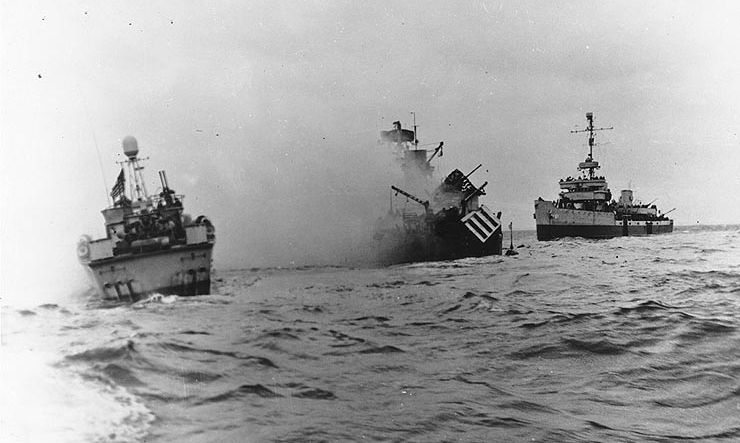A lot of servicemen lost their lives on D-Day, storming the beaches of Normandy on June 6, 1944.
For many of Jim Gardner’s shipmates, an assignment just off-shore the following day was every bit as deadly.
Gardner is one of the few remaining crewmen from the USS Tide, a minesweeper that sank on June 7, 1944, after hitting a German mine off Utah Beach.
It’s a hazard that came with the job, Gardner said. It’s reflected in the minesweepers’ motto he recited: “Where the fleet is going, we have been.”
Another minesweeper, the USS Osprey, hit a mine going in ahead of the landing forces on June 6.
“It was the first casualty of the invasion,” he said.
Gardner and five shipmates are holding a reunion in Vancouver — a chance to remember those who lost their lives 67 years ago tomorrow.
“We had a 100-percent casualty rate,” said Gardner, who lives in Ocean Shores. “We had 112 men on board: 26 died and 86 were wounded.”
The three-day reunion is at the Red Lion Hotel at the Quay, 100 Columbia St. Members of the public are welcome to come by Tuesday after 10 a.m. to meet the sailors and share some stories.
There are a few other surviving Tide crewmen who were unable to make it to the reunion.
The Tide sailed to Great Britain in March 1944 to prepare for the invasion, the 86-year-old veteran said.
“As more ships arrived in the bigger harbors, we wound up in littler harbors, he said.”
Gardner said he had a chance to witness some of the June 6 invasion from his ship, as the heavy hitters in the U.S. fleet shelled the German defenses.
“There was a big flash when a battleship would shoot. We swept the area for them to anchor. We swept lanes for the destroyers to get even closer so they could fire on shore batteries,” Gardner said.
“I got to see about two hours of it. There were ships everywhere you looked,” he said.
The following day, the USS Tide was patrolling near the outlet of a river that flowed into the English Channel. They prevented E-boats — the German equivalent of PT boats — from dashing out to attack Allied vessels.
“A big magnetic mine blew the ship apart. The captain was killed,” said Gardner, whose duties included navigation and ship control. “I was behind the pilot house, and I was flipped over the stern.”
Gardner and about 30 other survivors were picked up by a PT boat. It took them to a landing craft that had just delivered a shipment of tanks to the beach.
“We returned to England the next day,” Gardner said.
He was hospitalized with a perforated ear drum and a broken right forearm.
Gardner returned to duty on another minesweeper, USS Toucan, serving in the Pacific through the end of the war and beyond.
Even in peace time, there were a lot of mines to clear in Asian waters, including China’s biggest rivers.
“I didn’t come home until February 1946,” he said.




